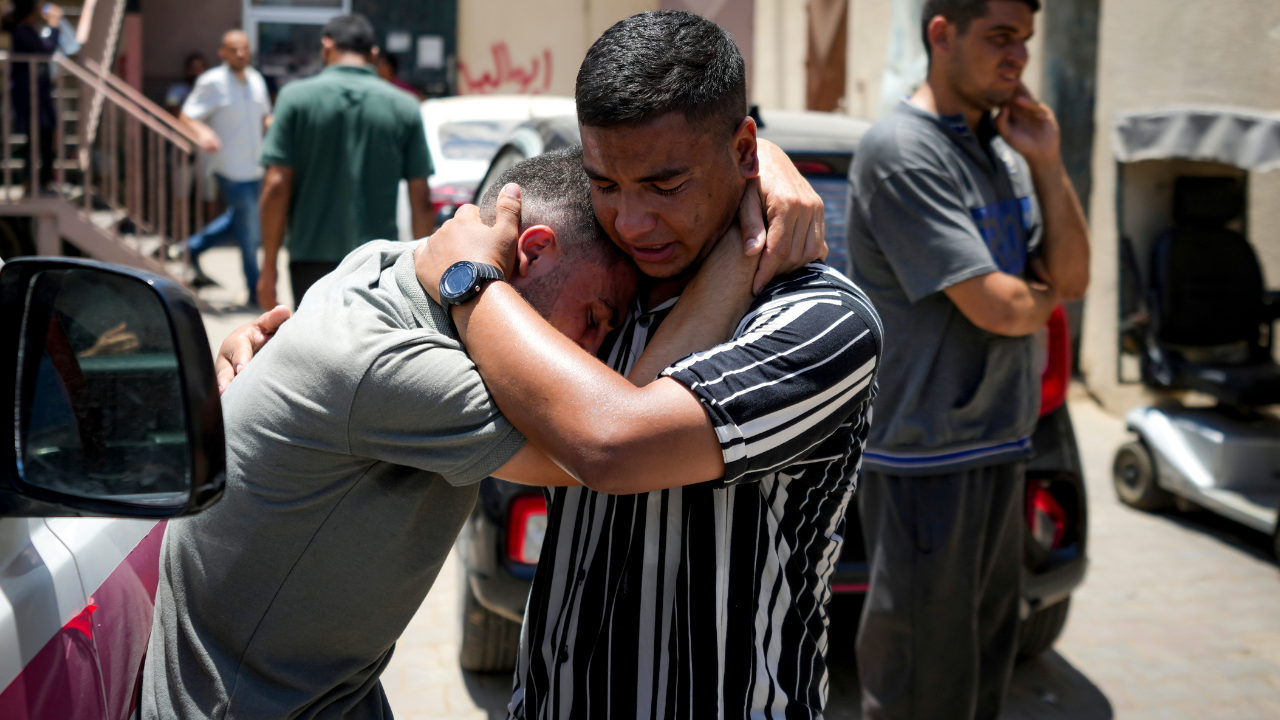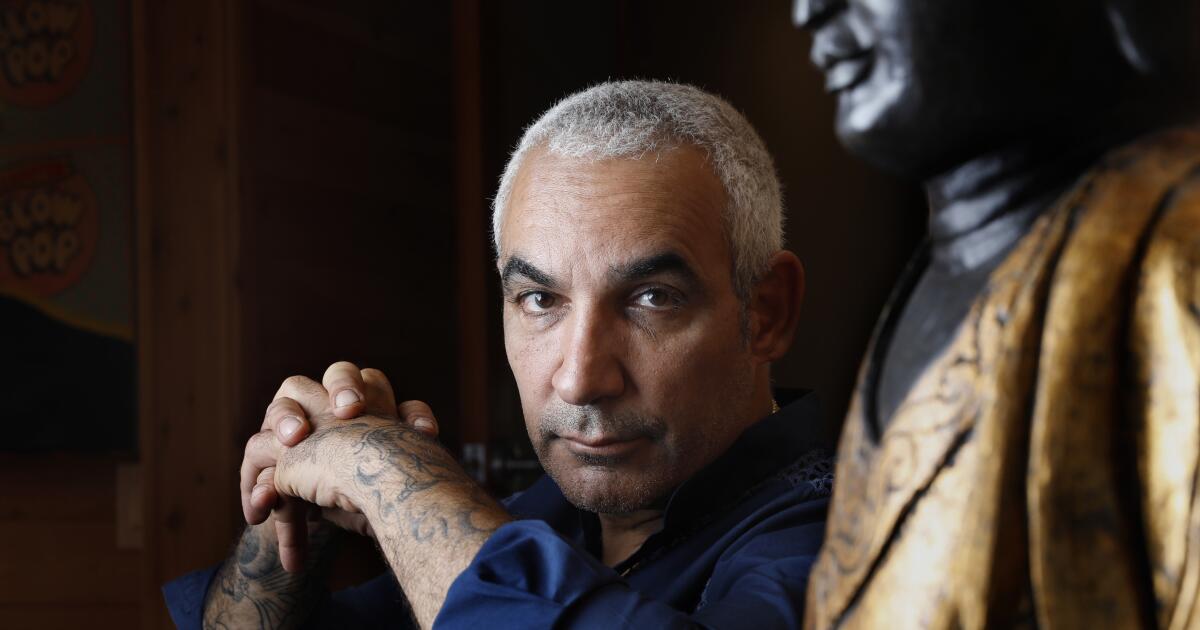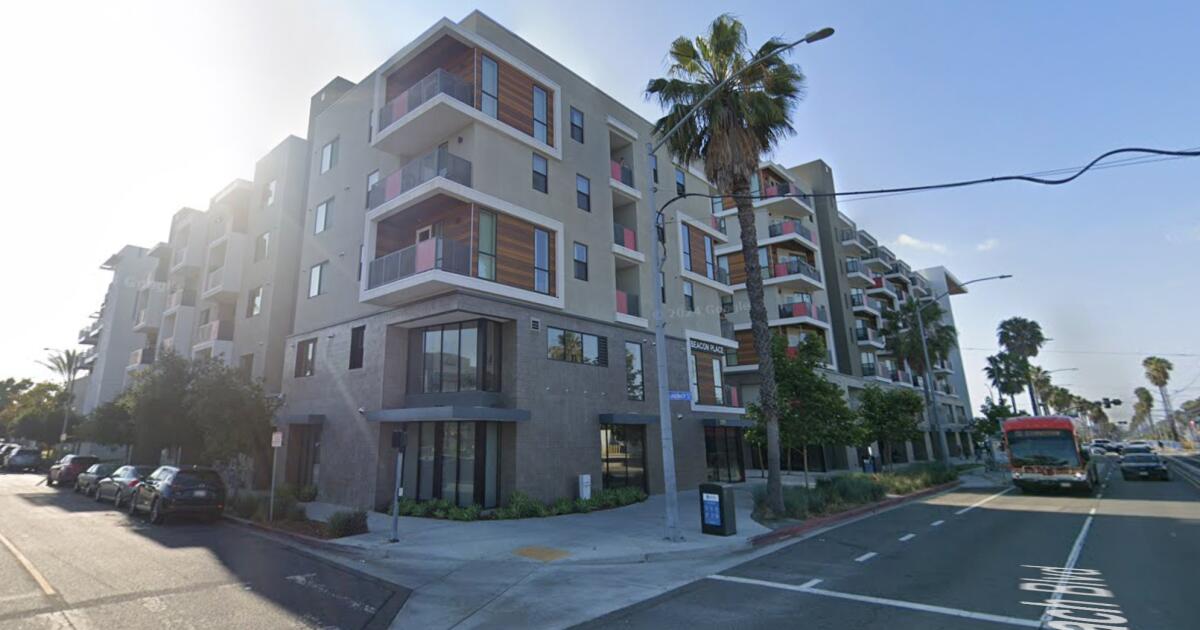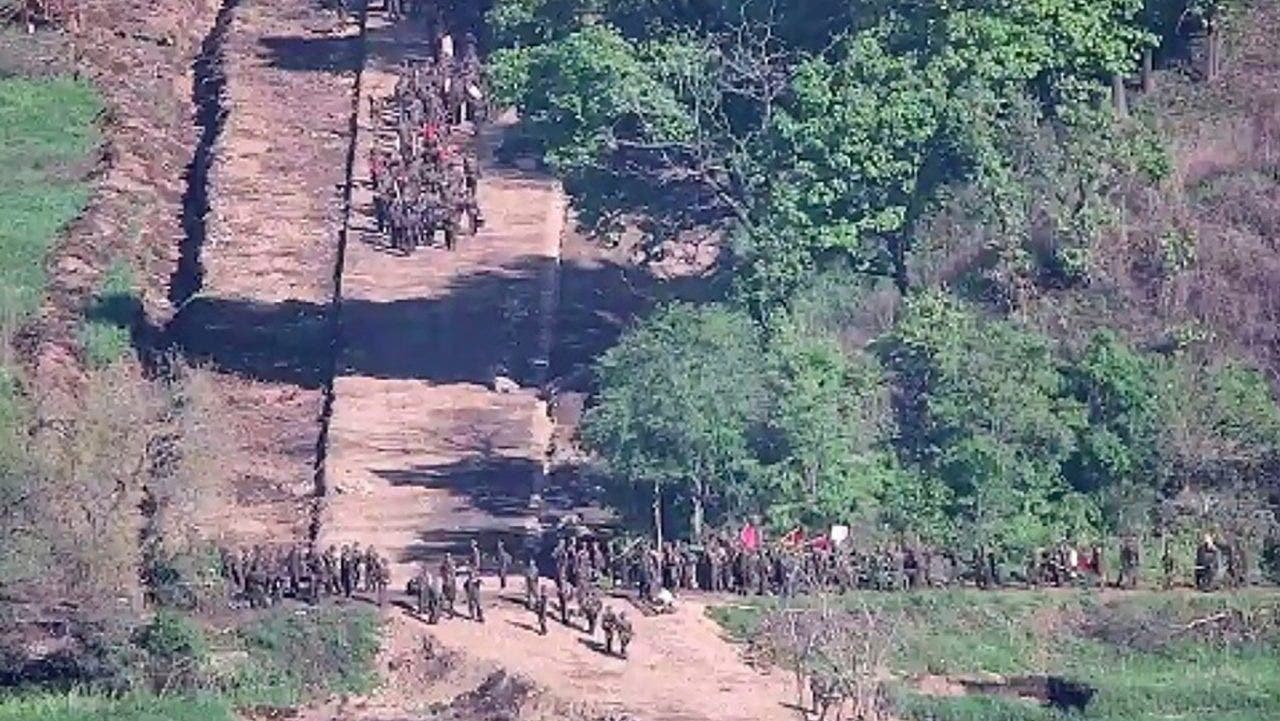- An Israeli airstrike on a school-turned-shelter in southern Gaza killed at least 25 Palestinians on Tuesday.
- Heavy shelling in northern Gaza has forced the closure of medical facilities in Gaza City and prompted thousands of people to flee.
- Israel's latest ground attack on Gaza's largest city is aimed at combating Hamas militants who are regrouping in previously cleared areas.
An Israeli airstrike on a school-turned-shelter in southern Gaza killed at least 25 Palestinians on Tuesday, while heavy shelling in the north forced the closure of medical facilities in Gaza City and sent thousands fleeing in search of increasingly hard-to-find shelter.
Israel's new ground assault on Gaza's largest city is its latest effort to combat Hamas militants who are regrouping in areas the military previously said had been largely cleared.
Large parts of Gaza City and surrounding urban areas have been razed or left in tatters after nine months of fighting. Much of the population fled at the start of the war, but several hundred thousand Palestinians remain in the north.
STATE DEPARTMENT CRITICISES ISRAEL'S ATTEMPTS TO 'MITIGATE HARM TO CIVILIANS' IN GAZA WAR: REPORT
“The fighting has been intense,” said Hakeem Abdel-Bar, who fled Gaza City's Tuffah district to a relative's home elsewhere in the city. He said Israeli warplanes and drones were “attacking everything that moved” and that tanks had entered central districts.
Palestinians mourn their relatives killed in the Israeli bombardment of the Gaza Strip, at a hospital morgue in Deir al-Balah, July 9, 2024. (AP Photo/Abdel Kareem Hana)
The attack at the school entrance killed at least 25 people, according to an Associated Press reporter who counted the bodies at Nasser Hospital in Khan Younis. Hospital spokesman Weam Fares said the dead included at least seven women and children and that the death toll was likely to rise.
Earlier airstrikes in central Gaza killed at least 14 people, including a woman and four children, according to two hospitals that received the bodies. Israel has repeatedly struck what it calls militant targets in Gaza since the war began nine months ago.
The military blames civilian deaths on Hamas because the militants fight in densely populated urban areas, but it rarely comments on individual attacks, which often kill women and children. The Israeli military said the airstrike near the school and reports of civilian casualties were being reviewed, and said the strike targeted a Hamas militant who took part in the Oct. 7 attack on Israel.
Israeli tanks reach central Rafah for the first time in Gaza war
There was no immediate word on casualties in Gaza City either. Families whose relatives were injured or trapped were calling for ambulances, but emergency services were unable to reach most of the affected districts due to the Israeli operations, said Nebal Farsakh, spokesman for the Palestinian Red Crescent.
“It's a dangerous area,” he said.
After Israel called for the evacuation of eastern and central Gaza City on Monday, staff at two hospitals — Al-Ahli and the Hospital of the Association of Patients’ Friends — rushed to transfer patients and closed, the UN said. Farsakh said all three medical facilities run by the Red Crescent in Gaza City had closed.
Dozens of patients were taken to the Indonesian Hospital in northern Gaza, which was the scene of heavy fighting early in the war. “We don't know where to go. There is no treatment or basic necessities,” said Mohammad Abu Naser, who was being treated there. “We are slowly dying.”
The Israeli military said Tuesday it had told hospitals and other medical facilities in Gaza City that there was no need to evacuate them, but Gaza hospitals have often closed and moved patients at any sign of possible Israeli military action, fearing incursions.
The Episcopal Church in the Middle East, which operates Al-Ahli, said the hospital “was forced to close by the Israeli military” after evacuation orders and a wave of drone strikes nearby on Sunday.
Over the past nine months, Israeli troops have occupied at least eight hospitals, causing the deaths of patients and medical staff and massive destruction of facilities and equipment. Israel has claimed that Hamas uses the hospitals for military purposes, although it has provided only limited evidence.
According to the United Nations humanitarian office, only 13 of Gaza's 36 hospitals are functioning, and only partially.
According to the territory's health ministry, the Israeli campaign in Gaza, triggered by the Hamas attack on October 7, has killed or injured more than 5% of the 2.3 million Palestinians living there. Almost the entire population has been driven from their homes and many have been displaced multiple times. Hundreds of thousands of people are crammed into stifling tent camps.
The UN humanitarian office said the exodus in Gaza City was “dangerously chaotic” and people were being instructed to flee through neighbourhoods where fighting was taking place.
“People have been observed fleeing in multiple directions, not knowing which is the safest,” the agency said in a statement. It added that the largest UN bakery in the city had been forced to close and that fighting had prevented aid groups from accessing warehouses.
Maha Mahfouz, a mother of two, said she fled twice in the past 24 hours. First, she rushed out of her home in Gaza City to go to a relative’s house in another neighborhood. When the situation became dangerous, she fled Monday night to Shati, a refugee camp that has been operating for decades and has become an urban district where Israel has carried out repeated raids.
He described the massive destruction in the areas targeted in the latest attacks. “Buildings were destroyed, roads destroyed, everything turned into rubble,” he said.
The Israeli military has said it had intelligence showing militants from Hamas and the smaller Islamic Jihad group were regrouping in central Gaza City. Israel accuses Hamas and other militants of hiding among civilians. In Shijaiyah, a Gaza City neighborhood that has been the scene of weeks of fighting, the military said it had destroyed 5 kilometers (3 miles) of Hamas tunnels.
Hamas has warned that the latest incursions into Gaza City could lead to the collapse of negotiations for a ceasefire agreement and the release of hostages.
Israel and Hamas appeared to have narrowed their gaps in recent days, with mediation by the United States, Egypt and Qatar.
CIA Director William Burns met with Egyptian President Abdul Fattah el-Sissi in Cairo on Tuesday to discuss the negotiations, el-Sissi's office said. More talks are to be held on Wednesday in Qatar, where Hamas maintains a political office.
CLICK HERE TO GET THE FOX NEWS APP
But obstacles remain, even after Hamas agreed to relent on its key demand that Israel commit to ending the war as part of any deal. Hamas still wants mediators to ensure that negotiations conclude with a permanent ceasefire.
Israel has rejected any deal that would require it to end the war without Hamas leaving. On Monday, Hamas accused Israeli Prime Minister Benjamin Netanyahu of “placing more obstacles in the way of negotiations,” including operations in Gaza City.
On Oct. 7, Hamas's cross-border raid killed 1,200 people in southern Israel, most of them civilians, according to Israeli authorities. The militants took about 250 people hostage. About 120 remain in captivity and a third are said to be dead.
Israel's airstrikes and offensives in Gaza have killed more than 38,200 people and wounded more than 88,000, according to the territory's health ministry, which does not distinguish between combatants and civilians in its tally.












